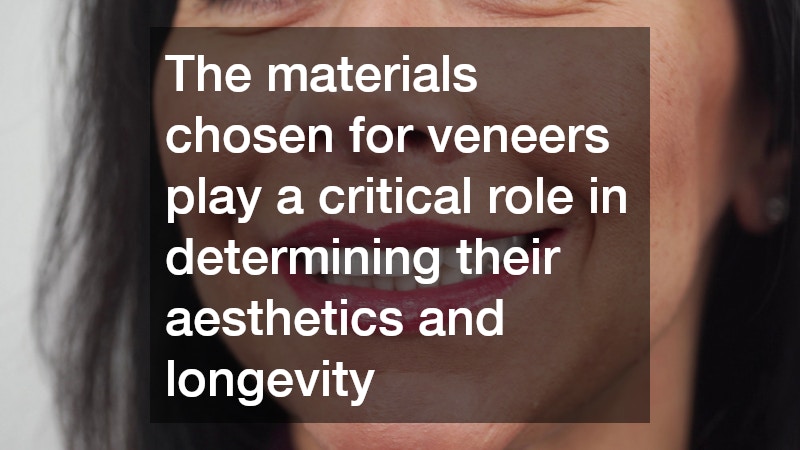The Complete Guide to Dental Veneers: Transforming Your Smile with Confidence
Introduction
Explore how dental veneers can transform your smile and boost your confidence. Learn about the procedure, benefits, and key considerations for anyone considering this dental enhancement.
What are Dental Veneers?
Dental veneers are wafer-thin shells designed to cover the front surface of teeth to enhance their appearance. Typically made from porcelain or composite resin materials, these veneers are custom-made to replicate the individual’s teeth while providing a desired shade and shape.
The emergence of veneers as a popular cosmetic solution lies in their ability to offer dramatic improvements in one’s smile swiftly and efficiently.
There are several reasons individuals might seek out veneers, including discolored, worn down, chipped, or misaligned teeth. Not only do veneers offer an aesthetic solution, but they also protect the underlying tooth surface. This makes veneers a versatile option in restorative dentistry as well, contributing significantly to a person’s dental health and self-esteem.
Before deciding on veneers, potential candidates should have a comprehensive understanding of what the process entails and how it can become a part of their broader oral care routine. By considering the types of veneers and the materials used in their creation, individuals can make informed decisions aligned with their personal goals and financial capabilities.
Different Types of Veneers
There are two primary types of veneers: porcelain and composite. Porcelain veneers are preferred for their durability and natural appearance. They resist stains better than composite veneers and can last anywhere from 10 to 15 years with proper care. Although they tend to be more costly and require more extensive preparation, their results often justify the investment.
Composite veneers, on the other hand, are less expensive and require less tooth enamel to be removed. They are typically crafted in a dental lab or applied directly on the teeth during the dental visit. While they offer a quicker solution, they are prone to staining and generally have a shorter lifespan, lasting between 5 to 7 years.
Choosing between porcelain and composite veneers often depends on budget considerations, desired longevity, and how much time a patient wishes to spend on the dental chair. Consulting with a knowledgeable dentist can provide clarity on which type of veneer best suits an individual’s needs and expectations.
Material Selection for Veneers
The materials chosen for veneers play a critical role in determining their aesthetics and longevity. Porcelain is regarded as the most visually appealing due to its similarity to natural teeth in color and translucency. Many patients prize porcelain veneers’ ability to maintain their appearance over time, avoiding the discoloration that can afflict other materials.
Composite resin, while not as refined in appearance as porcelain, offers a flexible alternative that is less invasive and more affordable. Even though they may require more maintenance and replacements over time, composite veneers are effective solutions for those seeking immediate cosmetic enhancement without breaking the bank.
Advanced developments in dental materials have broadened the options available for veneers, allowing individuals to select the material that best matches their lifestyle, aesthetic preferences, and budget. Understanding these variables is crucial to making the right choice.
What is the Procedure for Getting Veneers?
Obtaining veneers typically involves a multi-step procedure designed to ensure each veneer is custom-fitted for optimal results. From the initial consultation to the final fitting, each phase demands attention to detail and patient collaboration, ensuring satisfaction with the end product.
The journey towards a new smile begins with a comprehensive consultation involving a thorough dental examination and detailed conversation about a patient’s aesthetic goals. This foundational step is essential for creating a tailored veneer plan that aligns with the patient’s expectations and oral health needs.
Following the preparation phase, the actual placement of veneers requires removing a small amount of enamel from the tooth’s surface to create space for the veneer. Custom-molded to fit precisely onto the prepped tooth, veneers are then bonded permanently to the natural teeth with a strong adhesive, ensuring strength and stability.
Initial Consultation and Assessment
The initial consultation is paramount in determining the eligibility of a patient for veneers. During this visit, a dentist evaluates the overall oral health, examines the condition of existing teeth, and obtains X-rays as necessary. These diagnostics provide a comprehensive overview that aids in developing a successful veneer strategy.
It is during this stage that patients discuss their cosmetic aspirations and any concerns they may have about the procedure. This dialogue can cover issues such as the exact number of veneers needed, the preferred shade, and any other customizations specific to their dental anatomy or personal preferences.
This collaborative process ensures both the patient and dentist are aligned in expectations, paving the way for a well-planned veneer application that delivers a natural-looking and satisfying smile.
Veneer Placement Process
The actual placement of veneers is a meticulous process beginning with tooth preparation. By shaving off a tiny portion of the enamel, dentists create space for a veneer to fit appropriately and naturally within the mouth’s existing framework. An impression of the teeth is then taken to fabricate the custom veneer in a lab.
Once the individualized veneers return from the lab, their placement starts with thorough cleaning of the teeth to remove bacteria and potential staining agents. Each veneer is then positioned onto the teeth to assess fit and color before a special cement is applied for permanent bonding.
This cement is hardened with the use of a special light beam, optimizing their strength. Lastly, excess cement is removed, the bite is assessed, and necessary adjustments are made to ensure comfort and functionality.
Post-Procedure Care and Maintenance
Immediately following the veneer application, individuals might experience temporary sensitivity to hot and cold temperatures. However, these sensations usually diminish as the teeth adjust. Proper aftercare is crucial to extending the lifespan of veneers, often requiring specific guidelines set by the dentist.
Maintaining good oral hygiene practices such as regular brushing, flossing, and routine dental check-ups is imperative. It’s also advised to avoid biting down on hard objects like ice or using teeth to open packages, as these actions can cause chipping or damage.
With proper care and maintenance, veneers can continue to enhance one’s smile for many years. Thus, proactive dental habits and regular professional consultations are key components in maximizing the investment made in veneers.
What are the Benefits and Drawbacks of Veneers?
Veneers are celebrated for their ability to drastically enhance a smile’s appearance and boost individual confidence. However, like any dental treatment, they come with both advantages and potential drawbacks that need careful consideration.
Among the myriad benefits of veneers is the ability to resolve multiple cosmetic issues simultaneously, such as discoloration, minor misalignments, and gaps between teeth. The non-invasive nature of veneer installation compared to crowns or full tooth replacements makes them a preferred choice for many.
Nevertheless, it’s essential for prospective patients to consider possible drawbacks such as the irreversible nature of the procedure due to enamel removal and the financial investment required. Comprehensive understanding of both benefits and challenges will help individuals make informed decisions.
Advantages of Veneers
Veneers offer a transformative aesthetic appeal, significantly enhancing the overall appearance of one’s smile. By providing a natural look and even color distribution, veneers offer immediate results that can boost self-esteem and leave a lasting positive impression.
In addition, veneers provide functional benefits by protecting the teeth’s surface from damage. They offer a durable exterior capable of resisting stains from common consumables like coffee and wine more effectively than natural teeth.
Moreover, maintaining veneers is relatively straightforward with proper oral hygiene practices. Their lasting durability and compelling results make them a long-term investment in one’s dental well-being and confidence.
Potential Drawbacks to Consider
Despite their benefits, dental veneers are not without their drawbacks. One potential downside is the cost, as veneers can be an expensive treatment choice given the materials and labor involved. Additionally, it is important to recognize that veneers are not a permanent solution and may require eventual replacement or repair.
There is also a risk associated with the irreversible change to one’s teeth due to enamel removal. Once enamel is gone, it cannot be restored, making this decision a permanent alteration. Proper consideration of this consequence is crucial before progressing with veneers as a cosmetic solution.
It’s also worth noting the need for ongoing maintenance and potential sensitivity experienced by some patients. Understanding these potentialities can better prepare individuals for the realities of living with veneers.
Choosing the Right Dentist for Veneers
Selecting a qualified dentist is a pivotal step in achieving successful veneer results. Not only should the dentist be well-versed in cosmetic dentistry, but they should also have a proven track record with veneer procedures, ideally evidenced by real patient testimonials and before-and-after photos.
A reputable dentist prioritizes a thorough initial consultation, ensuring an understanding of the patient’s goals and dental health status. This establishes a strong foundation for effective veneer planning and execution tailored to the individual’s needs.
Ultimately, entrusting veneer procedures to a competent and experienced dentist is essential for maximizing the positive outcomes of the treatment, fostering confidence in the aesthetic and functional transformation achieved.
Conclusion
The decision to embark on the journey of dental veneers represents a significant commitment to one’s dental aesthetics and overall self-confidence. By understanding what the procedure entails, alongside the benefits and potential challenges, individuals are better equipped to make informed decisions.
Professional guidance from a trusted dental expert plays a key role in ensuring the success of veneer applications, maximizing both the immediate and long-term benefits of this cosmetic enhancement. Personalized consultations and careful planning facilitate outcomes aligned with a patient’s desires and needs.
Ultimately, veneers present a valuable opportunity to transform a smile, enhance self-esteem, and promote enduring oral health. Through informed decision-making and expert collaboration, veneers can realize their full potential, delivering a radiant, confident smile.



